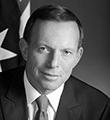It is lovely to be back here in India some 33 years after, as a student between a stint at the University of Sydney and a stint at the University of Oxford I spent three months here in India, including a fortnight here in the great city of Mumbai.
Professors, distinguished guests, Parliamentary colleagues, ladies and gentlemen, I do feel very honoured to be here in this great hall of learning to help launch in India the New Colombo Plan. I say this great hall of learning because there are very few institutions of learning anywhere in the world which have done as much to spread the light of knowledge as this great University of Mumbai.
As I said a moment ago, I was a student at the University of Sydney – some 20,000 students in those days. I then went to the University of Oxford – some 8,000 students in those days. Well, 700,000 students here at the University of Mumbai – what a mighty institution. It is my hope in a small, but significant way those numbers can be augmented in the years ahead by more students from Australia.
Some of you may be aware that back in 1950 the then Australian Government instituted what became known as the Colombo Plan. It was a scheme under which the best and the brightest of the students of our region came to universities in Australia to live, to learn, and then to return to their home countries with the benefits of that education and that life that they’d had in Australia.
It was a marvellous scheme and between 1950 and 1985 some 40,000 people came from the subcontinent, from South-East Asia, from the Pacific, to the universities of Australia, and they returned in large measure to their countries the better for that experience.
But I want to say this to you: it was a one-way street and what we now want in Australia is a two-way street. We want to return the compliment to our region by sending our best and brightest to the great universities of our region so that they can live, can learn, can speak the local languages, and come back to our country enriched by that experience.
We have much to offer the world; the world has much to offer us. Australia has much to offer India; India has at least as much to offer Australia. Indian people have been coming to Australia for many years. There are now some half a million people of Indian background living in Australia. In any one year, there are some 40,000 Indian students studying in Australia. Regrettably, right now, there are just a few tens of Australian students studying in India. That must change and that will change as a result of the New Colombo Plan that I launch this day, here at the University of Mumbai.
From next year, there will be hundreds of Australian students in India. In the years to come, those numbers will mount and mount and mount so that there will be thousands of Australian students here in India, experiencing the richness and the depth of the learning and the culture that this great country has to contribute to us and to the wider world.
There is so much that we can learn from each other. The motto of my first university, Sydney University – sidere mens eadem mutato – different skies, the same learning. And I want to pay tribute to this university for preserving the universal wisdom of mankind, for doing what it can to spread the knowledge, the truth, the wisdom, and the decency, which is at the heart of our common humanity. You have been doing that since 1857. This candle that we lit at the start of this ceremony stands for that light of learning – stands for that light of learning – the light of learning that we want to shine bright, right around the world and that will shine all the brighter because of the New Colombo Plan that we launch today.
Thank you so much. It is a real honour to be here.
[ends]

